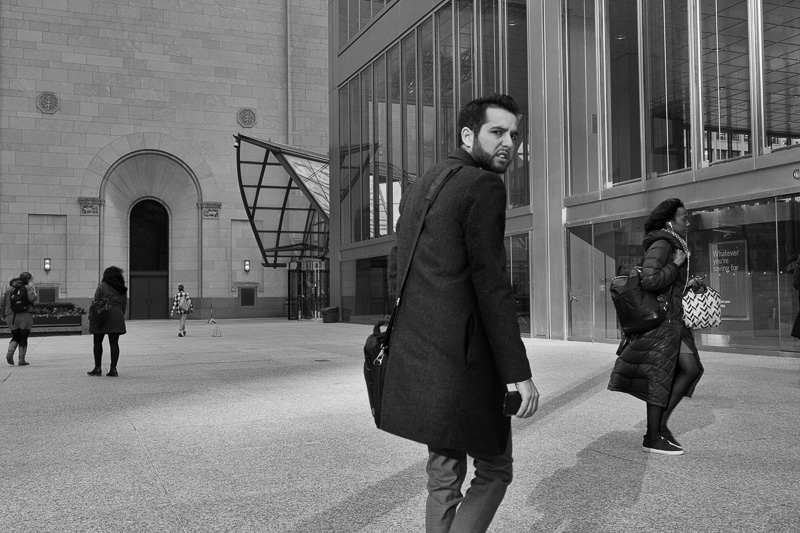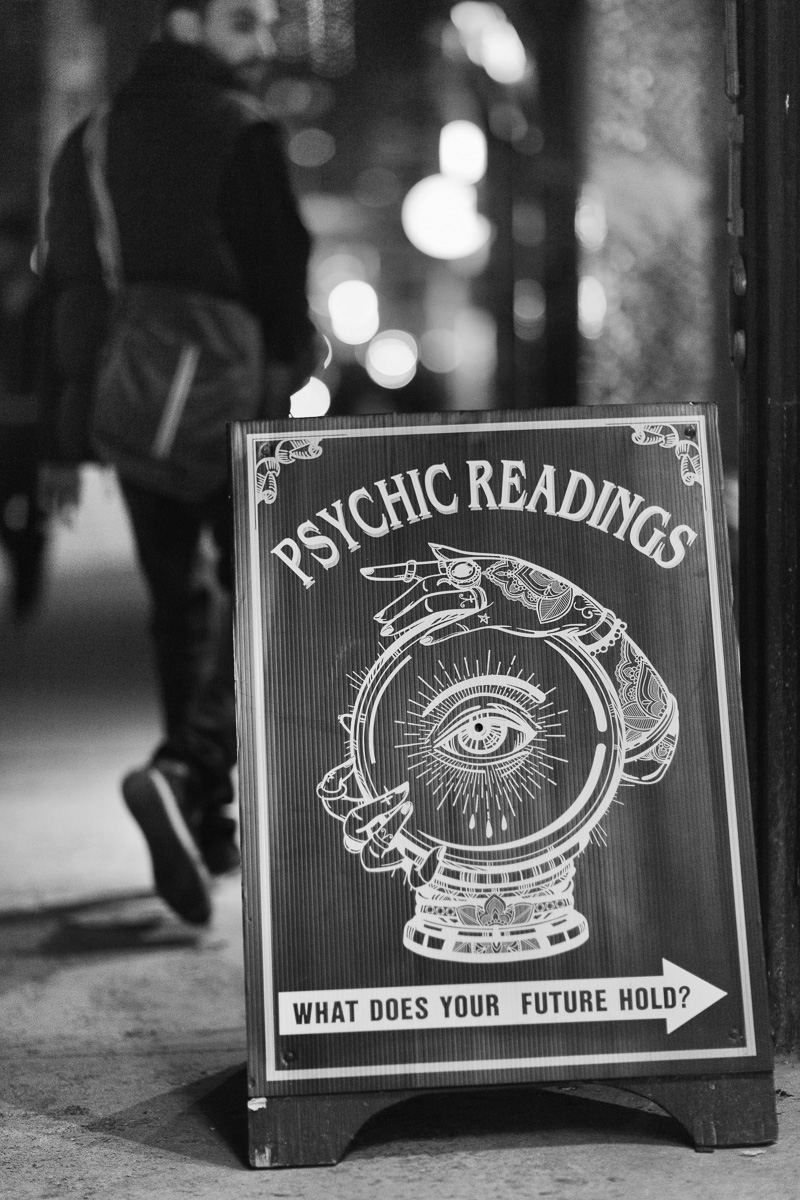
A backward glance. A crazy Ivan. What motivates it? Curiosity? Or paranoia? Sometimes, I position myself in a public space and fantasize that I’m invisible, like Harry Potter with his cloak. I rationalize my photographic obsession by telling myself that I’m an anthropologist observing urban culture in the early 21st century and, as such, I need to be invisible. But the backward glance bursts my fantasy. It proves that I am anything but invisible. Far from the dispassionate observing eye, I am part of the scene I photograph and equally the subject of other people’s observations. Sometimes, my presence provokes their curiosity, at other times, their hostility.
In the 60’s, the anthropologist, Clifford Geertz, dispensed with the pretensions to scientific objectivity that had driven the work of predecessors like Margaret Mead. In his famous study of Balinese cockfighting, Geertz placed himself squarely in the middle of the narrative. He and his wife were observing an illegal cockfight when the police arrived and chased everyone away. The couple ran down the main street and followed a local into a courtyard that turned out to be the man’s home. The man’s wife set up a table, spread a table cloth, and poured four cups of tea. When the police came to the door and demanded to know what was going on, the man covered for them with an elaborate tale. Only after several pages of contextual detail does Geertz get around to sharing his observations of Balinese culture.
I take my cue from Geertz. It is impossible to pretend that I am uninvolved in the situations I photograph, that I don’t interact with the people around me or influence their behaviour. And yet, even today, many within the photographic community claim that the gold standard of photographic practice requires us to maintain this fiction of invisibility. However, we maintain the fiction at the expense of the facts: photographers were pulling the photographic equivalent of a “Clifford Geertz” long before we ever had his study of Balinese cockfighting.
Consider, for example, the 1936 Walker Evans photograph from Hale County, Alabama, featuring the cotton sharecropper, Floyd Burroughs, and his daughter. Floyd sits on the threshold of an open doorway while his daughter sits nearby on a plain wooden chair. Both rest their bare feet on the rough planks of the floor. Evans made this photograph while on assignment for the U.S. Farm Security Administration. Before accepting the assignment, he insisted that he would not allow his photographs to be used for ideological or propaganda purposes; they could only be used as a record. Looking at the photograph eighty-four years later, it’s impossible not to detect an ideological stance at play in Evans’ work. The people are posed, not observed. Although obviously poor, their direct and expressionless gaze invests them with an understated dignity. Capturing them in this way offers a comment on their value as humans rather than as statistics in an economic crisis. This is more than a record; it’s a statement.
In a 1954 image, Vivian Maier captures a woman bending down to tie her shoelace, but she has turned her head sideways to gaze into the camera lens. As with the Walker Evans photograph, there is something about the woman’s direct and expressionless gaze that lends her a measure of simple dignity. But Maier goes one further: in the foreground, splayed across the pavement, is Maier’s own shadow poised in the act of making the photograph. Where Evans implies his own presence in the photograph, Maier makes it explicit.
Our history of photographic practice suggests a trajectory that leads us to the selfie stick. We are free to resist that trajectory if we choose, but we do ourselves a disservice if we cannot articulate reasons for our resistance and, instead, appeal to unthinking rules about invisibility.
Clifford Geertz, “Deep Play: Notes on the Balinese Cockfight”, The Interpretation of Cultures (New York: Basic Books, 1973), 412-53.
